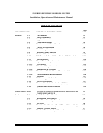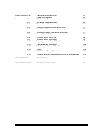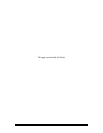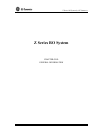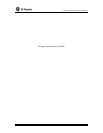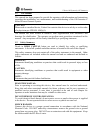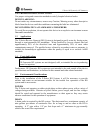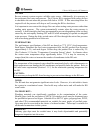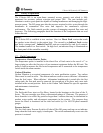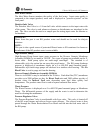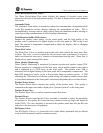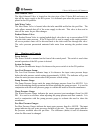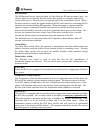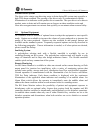
Z Series RO System by GE Osmonics
WATER:
Reverse osmosis systems require a reliable water source. Additionally, it is necessary to
have adequate flow rates and pressure. The Z-Series RO is equipped with safety devices
to shut down the unit when the pressure falls below 10 PSI. If flow rates drop below the
required level the pressure will drop as well, causing the RO to shut down.
It is important to run water at the design flow rate when testing water pressure rather than
reading static pressure. The system automatically restarts when the water pressure is
restored. A brief time delay has been incorporated to prevent telegraphing (short cycling)
caused by the unit rapidly shutting OFF and ON while attempting to operate on marginal
water pressure. During the delay period water will flow through the unit at line pressure
with water being produced at a lesser rate.
TEMPERATURE:
The performance specifications of the RO are based on 77°F (25°C) feed temperature.
Each degree Fahrenheit the feed water temperature falls, the RO product flow decreases
approximately 1.5%, and each degree Celsius drop, the product flow is reduced by 3%
(See Technote 113 for the “Temperature Correction Factors” chart). In climates where
the winter water temperature drops significantly below 77°F it may be necessary to
temper (heat) the water or increase the number of membranes in the RO unit.
WARNING:
The temperature of the tempered water should be monitored closely with a thermometer as
high temperatures can damage the RO membranes and possibly harm the patient. Refer to
the inlet water requirements (Section 1.11.1) for the maximum operating temperature for
the RO.
CAUTION:
It is necessary to keep the RO from freezing to prevent serious damage to the RO unit.
NOISE:
The RO unit does not generate significant noise levels. However, it is advisable to locate
the system in a mechanical room. Hard walls may reflect noise and will make the RO
seem louder.
WATER PURITY:
Plumbing materials can significantly contribute to the contamination of the water.
Metallic pipes (with the exception of ASTM 316 stainless steel) must be eliminated once
the purification process has begun. Schedule 40 or 80 PVC pipes, polypropylene, PVDF,
and other FDA recommended materials are suitable for most grades of purified water.
Care must also be exercised in the choice of a thread sealant. Teflon tape is suitable for
all threaded connections in this system.
WARNING:
Ordinary pipe dope must be avoided since it may leach objectionable and potentially
dangerous impurities into the water.
1238339b – 16Oct03 1 - 5 General Information



